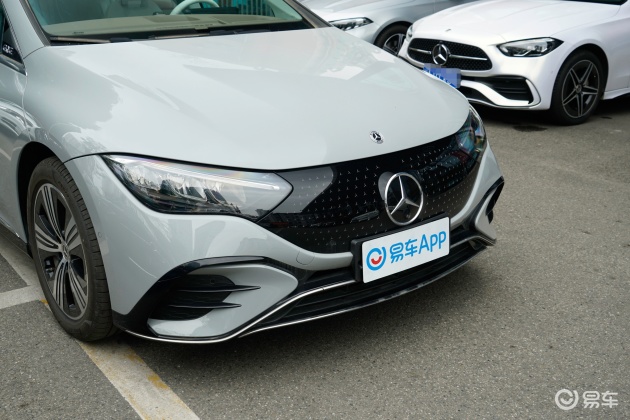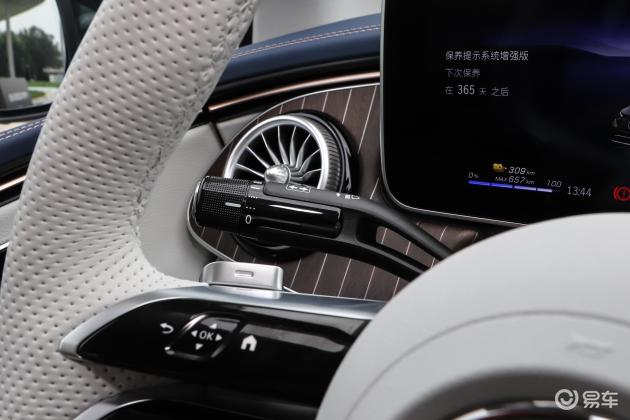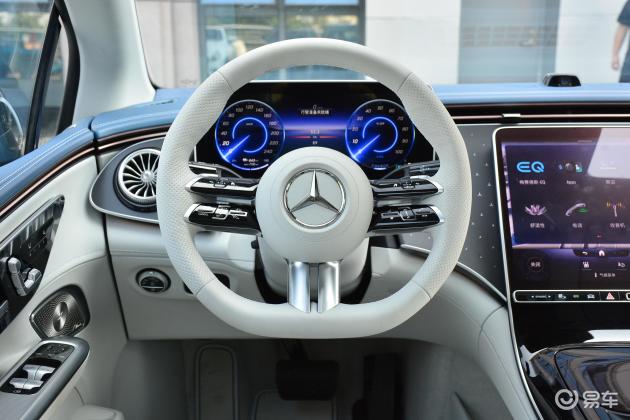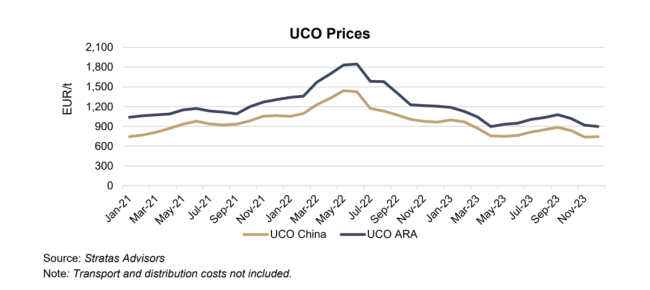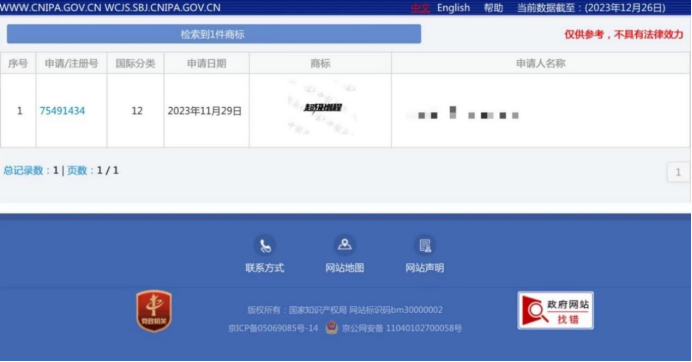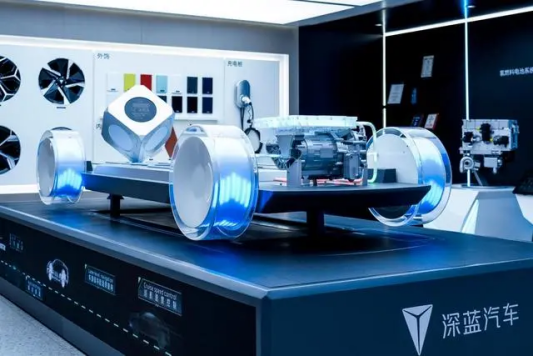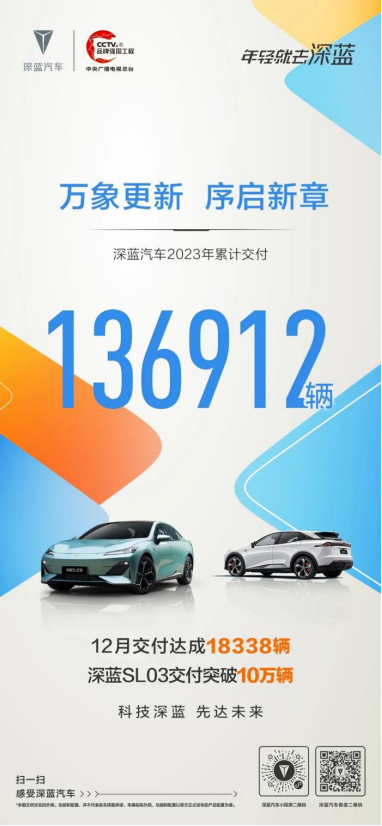
◆ "In 30, 50 or 100 years, what will be the most important topic when future generations write the history of our time?" According to Timothy Taylor, an economist at Macalester College in the United States, it is not the budget deficit, taxes and medical insurance in the United States, nor the euro crisis in the European Union, nor even the globalization that has been written in great detail, but: "The history of our time may be determined by the amazing rise of China."
◆ Let 2018 be a wonderful first year to open the "road to a strong country" in China’s new era
2018: The China era spurted out.
"Standing on the vast land of more than 9.6 million square kilometers, sucking the cultural nutrients accumulated by the long struggle of the Chinese nation for more than 5,000 years, with the majestic power of more than 1.3 billion people in China, we take the Socialism with Chinese characteristics road and have an incomparably broad stage of the times, with an incomparably profound historical heritage and an incomparably strong determination to advance."
Looking back on the past 2017, as far as the world is concerned, it was a year of great turmoil, great diversion and great change. For China, the most accurate description of this year is undoubtedly the wonderful outline of the great powers of the East made by this passage at the end of the report of the 19th National Congress.
The reason why there is such a sharp contrast is that in 2017, the 19th National Congress of the Communist Party of China was called "a major event to change the global situation" by the Financial Times, "it will affect the future direction of regional and world politics and economy" by Lianhe Zaobao, "it is of great significance to the CPC, China and the world" by The New York Times, USA, and described by the BBC as "standing in front of the world map".
The world’s largest ruling party congress, which was called the "world congress" by the western media for the first time in the history of world political parties, put forward a complete and practical "rejuvenation strategy" for the China people’s journey into a modern and powerful country in Socialism with Chinese characteristics in the new era, provided powerful kinetic energy for world development, laid a solid foundation for global stability, and contributed China’s wisdom to the road choice for mankind to enter a new stage of historical development.
In particular, the 19th National Congress put forward Socialism with Chinese characteristics Thought of the Supreme Leader in the New Era, and NHK said, "Without it, China cannot become stronger"; The election of a new central collective leadership with the Supreme Leader as the core, Washington post said, will definitely "make China and the whole world better" in the next few years.
On December 10, 2016, Timothy Taylor, an economist at Macalester College and editor-in-chief of Economic Outlook magazine, asked in an article entitled "The Rise of China: The Wealth of a Country", "What will be the most important topic when future generations write the history of our time in 30, 50 or 100 years?" In his view, it is not the budget deficit, taxes and medical insurance in the United States, nor the euro crisis in the European Union, nor even the globalization of books, but: "The history of our time may be determined by the amazing rise of China."
Throughout the history of the whole world, only China civilization has been in constant flux for thousands of years. However, as early as the 18th century, some western enlightenment thinkers expressed contempt for this sense of pride, and gave their "explanation" for the historical continuity of China civilization: the ancient civilization of China could exist for a long time, but only because it had not been attacked by a strong civilization or nation.
Now, when we open the report of the 19th National Congress, full of firm confidence in the road of Socialism with Chinese characteristics’s modernization and powerful country in the new era, and go into 2018, we will once again deeply realize that it is China that is so different that the world will open up new imagination and inspire new hopes.
"Do more China" in 2018
The Central Economic Work Conference held at the end of 2017 marked 2018 with three attributes: the first year of implementing the spirit of the 19th National Congress of the Communist Party of China, the 40th anniversary of reform and opening-up, and the decisive year of building a well-off society in an all-round way and implementing the 13th Five-Year Plan. This means that China, approaching the center of the world stage, will continue its "highlight moment".
"Since the 18th National Congress of the Communist Party of China, China’s economic development has made historic achievements and undergone historic changes, which has provided important material conditions for reform and development in other fields." The Central Economic Work Conference systematically summarized the great changes in China’s economic development in the past five years from six aspects:
First, the economic strength has reached a new level, with an average annual growth rate of 7.1%, which has become the main power source and stabilizer for world economic growth;
Second, there have been major changes in the economic structure, promoting structural reforms on the supply side and promoting the balance between supply and demand;
Third, the economic system reform has continued to advance, and the economy has become more dynamic and resilient;
Fourth, deepening the opening up to the outside world, advocating and promoting the joint construction of the "Belt and Road" and actively guiding economic globalization in the right direction;
Fifth, the people’s sense of gain and happiness has been significantly enhanced, decisive progress has been made in the fight against poverty, and the degree of equalization of basic public services has been continuously improved, forming the most populous middle-income group in the world;
Sixth, the ecological environment has obviously improved. The determination, strength and effectiveness of promoting ecological civilization construction are unprecedented, and the prevention and control actions of air, water and soil pollution have achieved remarkable results.
Almost at the same time, many international research institutions gave positive comments on China’s economic achievements. On December 19th, 2017, the World Bank released the latest China Economic Bulletin, which raised the estimated economic growth rate of China from 6.7% to 6.8% in 2017. Earlier, the United Nations released the World Economic Situation and Prospects in 2018, which predicted that the global economy would grow at the fastest rate since 2011 in 2017, and China’s contribution rate to global economic growth was about one-third.
Li Weiqiao, chief economist of the World Bank in China, commented that China’s economy has maintained growth resilience and the momentum of reform has increased. Therefore, in 2017, China achieved success on many fronts, especially the accelerated growth of residents’ income and consumption, which promoted economic rebalancing. Mirisha, a senior economist at the bank, believes that favorable economic conditions provide a good opportunity for China to further reduce macroeconomic risks and deepen reforms in 2018, and strive to achieve higher quality, more efficient, fairer and more sustainable development.
China’s foreign trade, the first to feel the "spring tide" in the new era, has handed over a refreshing report card. On December 28, 2017, Gao Feng, a spokesman for the Ministry of Commerce, said that in the first 11 months of 2017, China’s foreign trade import and export volume reached 25.14 trillion yuan, a year-on-year increase of 15.6%. In dollar terms, it was $3,703.2 billion, a year-on-year increase of 12%. At this rate, if there are no special circumstances, it is estimated that China’s foreign trade import and export volume will once again exceed 4 trillion US dollars in 2017.
Foreign trade has an obvious pulling effect on national economic growth. According to Gao Feng’s specific analysis, in recent years, we have resolutely promoted the supply-side structural reform in the field of foreign trade, and the labor efficiency, capital efficiency, resource and environmental efficiency of foreign trade enterprises have been effectively improved, and the variety, quality and grade of products are developing in the direction of high-end, intelligent. Generally speaking, China’s foreign trade import and export is shifting from a high-speed growth stage to a high-quality development stage, and the development potential is gradually being released.
From the external environment, all parties are generally optimistic about the global economic growth in 2018. According to the forecast of the International Monetary Fund, the world economy is expected to grow by 3.7% in 2018, which is 0.1 percentage point faster than the expected world economic growth rate in 2017. The growth rate of international trade in goods and services will reach 4.0%, which is higher than the average growth rate of 3.4% from 2013 to 2017 in the last five years and exceeds the growth rate of the world economy.
On the basis of five years’ historical achievements and changes, Ren Zeping, chief economist of Evergrande Group, gave an impressive prediction and analysis of the future when interviewed by the reporter of Outlook News Weekly. "In the long process from 2010 to 2015, we can see that the market has been cleared spontaneously, and then the supply-side structural reform from 2016 to 2017 is superimposed, and the progress of capacity transformation and transformation is beyond the market imagination.
He judged that from 2016 to 2018, after three consecutive years of L-shaped bottom, China’s economy will gradually change market expectations. "With the start of a new round of production cycle, the superposition of a new round of inventory cycle and the impact of real estate regulation on the economy coming to an end, China’s economy may break through the L-shape in 2019. This means that all short positions in the economy will definitely increase in the second half of 2018. "
In fact, the Central Economic Work Conference has given a major directional judgment. "Socialism with Chinese characteristics has entered a new era, and China’s economic development has also entered a new era. The basic feature is that China’s economy has shifted from a high-speed growth stage to a high-quality development stage." This strongly indicates that a new wave of development in China is surging in the depths of the skyline.
On the Eve of the Big Bang of the Information Revolution
"From the macro-economic operation data, we can only see one side of China’s economy, just like an electrocardiogram of the elderly, which fluctuates lower and lower until it finally becomes a parallel line. But when you open the industrial structure behind this parallel line and look at the growth curve, you will find the heart of a young man, with a surge of emotion and a strong pulse. "
In the interview, Liu Yuhui, director of China Economic Evaluation Center of China Academy of Social Sciences, pointed to the sharply differentiated economic data curve on PPT and told the reporter of Outlook News Weekly, "China’s economy is now a divided picture, half of which is seawater and half is flame."
From the perspective of industrial growth, emerging industries such as electronic products, computers and communication products are all growing at a high speed of about 15%, while traditional industries such as steel, cement, heavy chemicals and mining are at a low speed of about 3% or even negative growth. In terms of consumption, online consumption in China has increased by 35%, while offline consumption has only increased by 5% ~ 6%. So, together, it is a 10% parallel line. If you don’t look at the structure, you can’t see any changes.
In Liu Yuhui’s eyes, in the past five years, as the decision-makers vigorously advocated the innovation-driven development strategy, fully promoted the supply-side structural reform, and focused on promoting "three to one, one reduction and one supplement", the "young side" of China’s economy has become increasingly youthful. "The creation of new economy, new technology, new format and the iteration of new business are full of vitality and prosperity."
In 2017, Goldman Sachs, an American investment bank, believed that with China’s economy entering a new era and the rapid development of technologies such as AI, intelligent logistics and electric vehicles, the future lifestyle of China people may be reshaped, which may also have a significant impact on the investment direction of the global capital market.
For this reason, Goldman Sachs has selected 50 stocks from 18 emerging industries in China, of which 49% are technology, 21% are consumption upgrading, and finance only accounts for 7%, which is called "New Beautiful 50 Index". The results of the data are somewhat surprising. These companies representing the "new China" have long left behind the high point of the stock market bubble in 2015 and performed extremely strongly.
Encouraged by this, Goldman Sachs made another study, dividing China’s new economy into four parts: emerging industries, Internet, consumption upgrading and health industries. The results show that the growth rate of the Internet is over 30%, and the emerging industries, health industries and consumption upgrading sectors are all growing at a rate of over 20%. This implies that today’s China is on the eve of the full penetration and deep application of the information technology revolution, and a large number of new industries, new formats, new technologies and new models are condensing the all-round new kinetic energy of a new round of innovation and development in China.
Liu Yuhui believes that in the past five years, China’s "largest and most strategic infrastructure investment" is to effectively connect more than 1.3 billion people with a huge information network, people-to-people connection, people-to-things connection, and things-to-things connection … … Everything connected has turned China into a vast ocean of data.
"Traditional industries rely on land and capital, and economic transformation and new business creation rely on data, which is a big difference between emerging economies and traditional economies." In Liu Yuhui’s view, the increasingly active innovation wave of China’s information technology revolution is bringing more and more capital and talents into China’s "data ocean". This great change has quietly enhanced the resilience of China’s economy and changed the structure of China’s economy, and this process is still accelerating.
At present, the competition pattern of the global economy G2 has basically become a historical freeze. Others will be pursuers. Why? Liu Yuhui said that it is precisely because of the technological revolution that the future will be the digital economy of the Internet, so the global economic competition pattern is fixed in China and the United States, two Internet economic powers. "At present, the trend of competition between Chinese and American science and technology giants has been formed, and the US ‘ GAFA’ — — Google, Apple, Facebook, Amazon, China ‘ BATX’ — — Baidu, Ali, Tencent and Xiaomi. "
These science and technology giants have infiltrated into dozens of different new industries, and have already surpassed the concepts such as the Internet platform, forming a super "business ecosystem" that can be extended almost indefinitely without boundaries, from location-based local services, digital medical care, driverless, intelligent transportation, to Internet finance, new retail, new entertainment, intelligent hardware, and chip research and development & HELIP; … They break the boundary between network and reality and are active in various scenes online and offline; They cross the boundary between software and hardware, and provide consumers with services in the whole life process from birth to death.
Liu Yuhui told this reporter that the Internet revolution is shaping the resilience of China’s economy, and China’s national movement has a solid micro-foundation. "The information revolution and Internet economy are the outlets of China’s strategic opportunities. What is currently being staged in China is to prepare for China to reach the top of the world in 2035 and revive its national glory in 2049."
Modernization shaping of Millennium civilization
In the history of human development, strategic opportunities are fair to every country and people. With the world’s development prospects still foggy and chaotic, the biggest difference in 2018 is the fate of one person, one family, one enterprise, one country and one nation for hundreds of millions of people in China and the main body of market economy, all because of the 19th National Congress of the Communist Party of China, which has a clear course of a new journey of becoming a powerful country in Socialism with Chinese characteristics in the new era for more than 30 years.
"Whether it is revolution or construction, the great rejuvenation of the Chinese nation has always been the actual goal and the greatest motivation of our party." Pan Wei, director of the Center for China and World Studies in Peking University, told the reporter of Outlook Newsweek that at present, China is at the historical intersection of the goals of "two hundred years". How to build a well-off society in an all-round way, realize the goal of the first century, and how to take advantage of the situation to start a new journey of building a socialist modern country in an all-round way and March toward the goal of the second century? The CPC Central Committee with the supreme leader as the core gathers the wisdom of the whole party and the people of the whole country and serve the people of China at the party’s 19th National Congress.
The 19th National Congress of the Communist Party of China comprehensively analyzed the international and domestic situation and China’s development conditions, put forward clear requirements for building a well-off society in an all-round way, and divided the realization of the goal of the second century into two stages. From 2020 to 2035, on the basis of building a well-off society in an all-round way, we will struggle for another 15 years to basically realize socialist modernization; Strive for another 15 years on the basis of basically realizing modernization, and build China into a prosperous, strong, democratic, civilized, harmonious and beautiful socialist modernization power by the middle of this century.
This is the strategic arrangement of Socialism with Chinese characteristics’s new development in the new era, which not only makes the road map and timetable for realizing the goal of "two hundred years" clearer, but also means that the original goal of basically realizing modernization in China will be completed 15 years ahead of schedule, and the goal of the second century will be enriched and upgraded to build China into a prosperous, strong, democratic, civilized, harmonious and beautiful socialist modernization power.
In Pan Wei’s view, China’s "modernization" has always been "the people are rich and the country is strong", "but China’s modernization is not the modernization of capitalism, but the modernization of socialism, not the modernization of a few people, but the modernization of the broad masses of the people, the modernization of the whole Chinese nation and the modernization led by the Communist Party of China (CPC)."
It is precisely because of this "rejuvenation strategy" to realize the Chinese dream of the great rejuvenation of the Chinese nation that the future of China and the destiny of the people of China are spreading a broad and bright picture of "Yuyu clarifying Wan Li’s Egypt".
China’s economy is looking forward to a new starting point in 2018. In the interview, Zhong Wei, a professor at the Financial Research Center of Beijing Normal University, made an analysis and judgment on the development of China in three points:
2020: Reach a new historical height of human industrialization and urbanization.
From now until 2020, China is in the critical period of building a well-off society in an all-round way, and it is also in the rising period of the world economy pointed out by the Chairman of the Supreme Leader at the APEC meeting in Da Nang, Vietnam.
It is expected that in the next three years, China’s economic growth rate will stabilize at the growth platform of 6% ~ 7%. In 2020, China’s GDP will be about 15 trillion US dollars, and the per capita GDP will reach the average level of the world. The global proportion of China’s population and GDP will be about 18%.
This is not only the time when China’s well-off society is built in an all-round way, but also means that the rapid development of China’s economy will double the population enjoying industrial civilization and urban civilization in the past 500 years, and then China will be close to the entry threshold of OECD countries.
2035: Return to the country at the center of the stage.
2035 is the key node of the goal of the second century. So what is the significance of 2035? First of all, the goal of 2035 put forward by the 19th National Congress advanced the goal of basically realizing modernization by the middle of the next century put forward by Comrade Deng Xiaoping in the early stage of reform and opening up by 15 years. At the same time, China’s GDP in 2035 is about 30 trillion US dollars, which is equal to or slightly larger than that of the United States. The global proportion of China’s GDP is about 25%, and the world ranking of per capita GDP will be within 50, which is roughly equivalent to the current ranking of Central and Eastern European countries.
From 2035 to 2050, the global proportion of China’s GDP is in the normal range of 25% ~ 40%. This is the level of China’s economic capacity in the world economic system from Qin and Han Dynasties to 1840. China has the ability to lead East Asia to become an important region on a par with North America and Europe.
Since World War II, only the former Soviet Union and Japan have approached 70% of the GDP of the United States, and the gap between them and the United States has gradually widened since then. The year 2035 may be the key point for China to approach the United States in all directions, even to the same level, in terms of economic scale and competitiveness since World War II.
2050: A Great Revived Civilization Power.
China will gradually get rid of the "three-phase superposition", from "how to see" China’s economy through the new normal, to the long-term strategy of "how to reform" China’s economy through supply-side structural reform, and then to the road of Socialism with Chinese characteristics’s modernization and strengthening the country in the new era, and China’s economy will grow from high speed to high quality.
By 2050, China’s GDP will be about 60 trillion US dollars. This means that the global share of China’s GDP will exceed one third. From World War II to 1960s, the GDP of the United States accounted for about 40% of the global GDP.
Zhong Wei said, "It can be said that with the realization of the Chinese dream, China will realize the great national rejuvenation in 2050. At that time, the difference between China and the United States was that the United States was a century-old power and China was a Millennium civilization. "
Ideological guide to the journey of strengthening the country in the new era
Since the new century, the world has never been in great development, great change and great adjustment. The pattern of international power and global competition are evolving with each passing day, showing a fierce collision like a land-sea structure.
That is, capitalist civilization is fading, the focus of global development is shifting from the west to the east, and southern countries are beginning to expand from political awakening to economic awakening, development awakening and even institutional awakening and ideological awakening.
Every major leap forward of human society and every major development of human civilization cannot be separated from the knowledge change and ideological guidance of philosophy and social sciences. After the 18th National Congress, China’s all-round achievements and historic changes have proved this truth. It has been noted that the Central Economic Work Conference put forward Socialism with Chinese characteristics Thought of the Supreme Leader in the New Era at the 19th National Congress, and put forward Socialism with Chinese characteristics Economic Thought of the Supreme Leader in the New Era with the new development concept as the main content for the first time:
Insist on strengthening the party’s centralized and unified leadership over economic work to ensure that China’s economy develops in the right direction;
Adhere to the people-centered development thought, which runs through the overall layout of "five in one" and the coordinated promotion of "four comprehensive" strategic layout;
Adhere to the adaptation and grasp the new normal of leading economic development, base on the overall situation and grasp the law;
Insist on making the market play a decisive role in resource allocation, give better play to the role of the government, and resolutely remove institutional and institutional obstacles to economic development;
Insist on adapting to the main contradictions and changes in China’s economic development, improve macro-control, make a choice according to circumstances, prescribe a correct prescription, and take promoting supply-side structural reform as the main line of economic work;
Adhering to the problem-oriented deployment of the new strategy of economic development has a far-reaching impact on China’s economic and social development and reform;
Adhere to the correct work strategies and methods, strive for progress steadily, maintain strategic strength, adhere to the bottom line thinking, and move forward step by step.
Socialism with Chinese characteristics’s economic thought in the new era, the supreme leader with seven persistences as the core, is the theoretical crystallization of promoting China’s economic development practice in the past five years, the latest achievement of Socialism with Chinese characteristics’s political economy, and the ideological guide for the Communist Party of China (CPC) to shoulder the historical responsibility for the fate of the people in China and the future of human development, and the ideological weapon for driving whales to overcome risks and difficulties.
In an interview with the reporter of Outlook Newsweek, Tian Yingkui, a professor of economics at the Party School of the CPC Central Committee, interpreted it as "the core idea of economic governance modernization in 2049". In his view, towards 2049, the modernization of China’s economic governance faces three major issues: First, how to continuously improve the quality and efficiency of national economic development; Second, how to continuously improve the fairness and sharing level of national income distribution; The third is how to continuously improve the fairness and efficiency of the national economic system.
On this basis, we should accomplish three strategic tasks:
In the sense of production level and total supply, we should solve the problems of total quantity, structure, quality and benefit in economic development with high quality and high efficiency;
In the sense of distribution and demand determination, we should solve the problems of wages, profits, taxes and social security in national distribution with high quality and high efficiency;
At the institutional level and in the sense of rules of conduct, we should solve the problems of fairness, efficiency, rule of law and science in the economic system with high quality and high efficiency.
Tian Yingkui believes that all these can be found in the economic thought of Socialism with Chinese characteristics, the supreme leader in the new era with seven persistences as the core, to solve the problem and to overcome the difficulties. Among them, he believes that there are two most important points: First, insist on strengthening the party’s centralized and unified leadership over economic work. The second is to adhere to the people-centered development thinking.
This is because Socialism with Chinese characteristics has entered a new era, which means that the higher the starting point, the greater the difficulty and the more arduous the task. It also means that there are more and more new situations and problems, more and more contradictions and difficulties, more and more risks and challenges, and more and more resistance and pressure. At the same time, the instability and uncertainty facing the world are outstanding, especially the development and growth of China will inevitably have a major impact on the existing international structure. Some countries do not want to see the development and growth of socialist China, and do everything possible to prevent, obstruct and contain it.
How to conform to the trend of the times of peace, development, cooperation and win-win, and catch up in the process of knowing change, adapting to change and seeking change? How to better coordinate the domestic and international situations, win advantages, win initiative and win the future in the fierce international competition? How to expand the right to speak and make rules in participating in global governance, firmly defend China’s sovereignty, security and development interests, safeguard world peace and promote common development? It can be seen that the happiness of the people and the rejuvenation of the nation cannot be separated from the leadership of the CPC Central Committee with the Supreme Leader as the core for a moment, and it cannot be opened without the guidance of the most powerful political party in the world.
In Tian Yingkui’s view, adhering to the people-centered development thought is the fundamental political purpose of Socialism with Chinese characteristics’s market economy. Its core idea and thought is that all economic construction and development, all economic governance and reform should take the people as the center and the interests of the people as the foundation; Take people’s satisfaction and dissatisfaction, promise and disapproval, support and disapproval as the development criteria.
Specifically, it is to combine "socialism" with "market economy", develop modern market economy under socialist conditions, develop socialism in the construction of modern market economy, adhere to the combination of economic marketism and economic socialism, establish and improve Socialism with Chinese characteristics’s market economy system, and realize a higher degree of fairness and efficiency, and the organic combination of government and market. This is a great innovation of China people, Chinese nation and the Communist Party of China (CPC) in the understanding of Socialism with Chinese characteristics’s economic construction thought, and also a great historic leap in the history of world socialist economic practice.
At the end of the interview, Pan Wei pointed out a detail to the reporter of Lookout Newsweek. The report of the 19th National Congress made it clear at the beginning that the theme of this conference was "Do not forget your initiative mind, remember the mission", and the end of this report was "A trip to the Avenue, the world is public".
The phrase "A trip to the Avenue, the world is for the public" comes from the Book of Rites, followed by the words "Choose the virtuous and able, uphold faith and cultivate friendship, so the old friend is not only close to his relatives, but also has no only son and son, so that he can get old, be strong and useful, and all those who are proud, widowed, lonely and disabled can be supported. Men have points, women have returns. Goods, if you abandon them to the ground, don’t hide them in yourself; Force, evil is not out of the body, not for yourself. Therefore, it is said that it is great harmony to seek closure without prosperity, to steal thieves without doing anything, and therefore to go outside without closing. "
The ideology, humanistic spirit and moral norms of this excellent Chinese traditional culture have continued to this day, and will certainly inject new connotations and create new glories in the new era. In Pan Wei’s view, from 2018, these will become more and more concrete with development. (Published in the first issue of Outlook in 2018/Wang Jianjun, reporter of Outlook News Weekly)









